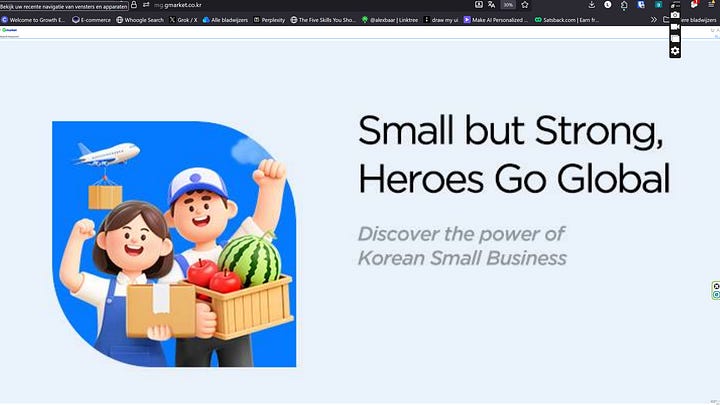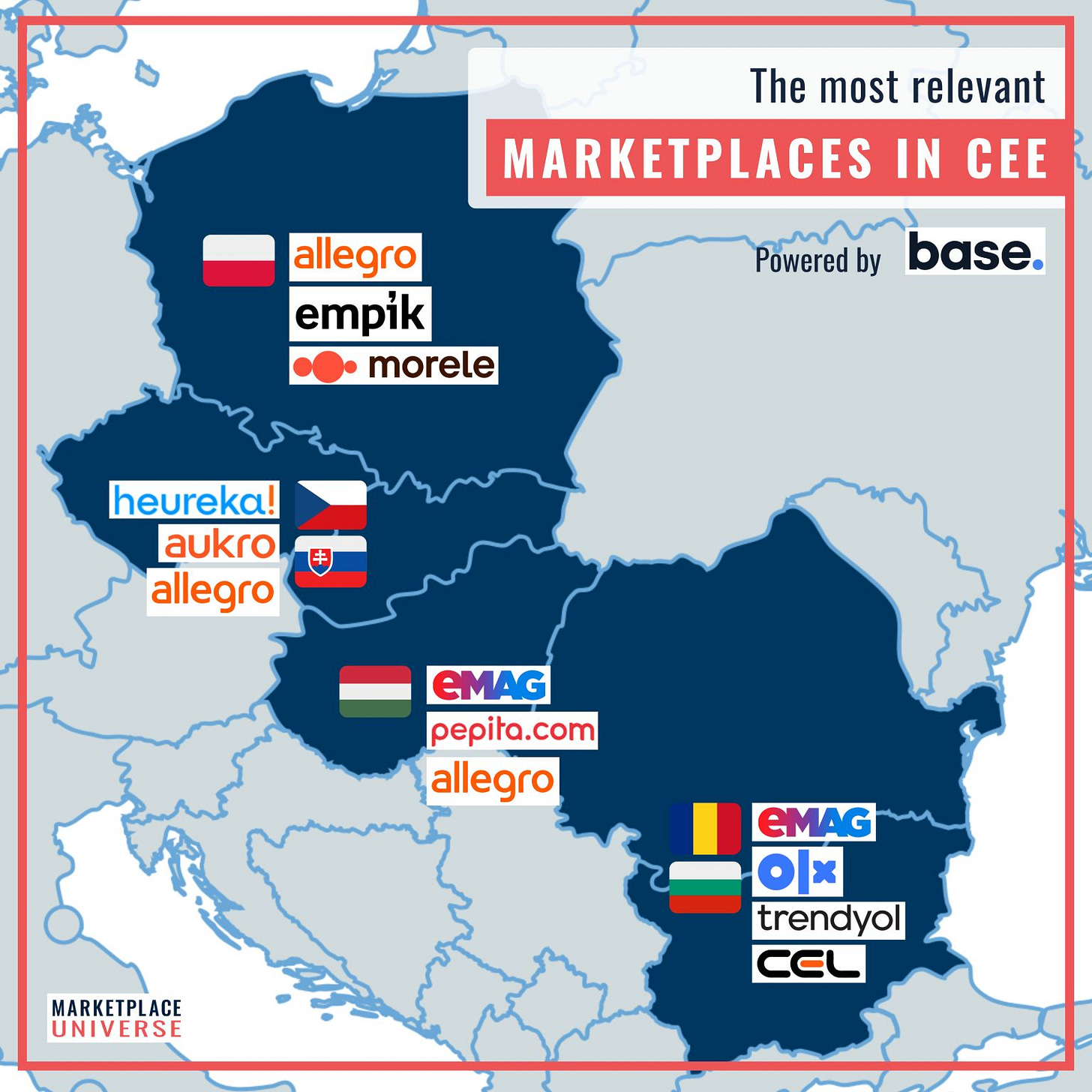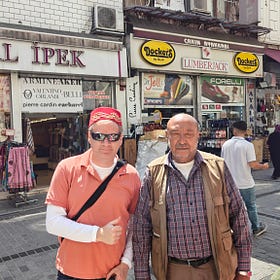Global Digital Marketing & Retail by Alex 110
Inspiration from across the world for retail enthusiasts, e-commerce professionals, marketing lovers and technology fans. Welcome back! I summarized some great links again, I stumbled upon this week.
🇦🇷 Mercado Libre goes wholesale 🚀🚀Huge potential!
Mercado Libre, often called “the Amazon of latin America” , is the region’s largest e-commerce and fintech platform. Beyond retail, it runs Mercado Pago (payments and fintech), Mercado Envíos (logistics), and Mercado Ads (digital advertising).
Now, they are entering B2B commerce. The global B2B e-commerce market is estimated to be four times larger by volume than the consumer (B2C) market, making this a high-stakes move. So far, I haven’t found any screenshots of the new B2B interface, but I’m very curious to see it as I also work in B2B and it’s just interesting to see interfaces/ux/features. If anyone has access, please share!
“With this solution, we seek to occupy a strategic space, democratizing wholesale commerce and offering a simple and secure platform that allows for optimized purchases and discounts of up to 50%.”
Details: https://finance.yahoo.com/news/mercadolibre-launches-b2b-unit-tap-164500652.html
https://www.digitalcommerce360.com/2025/09/23/mercado-libre-negocios-expands-b2b/
📈Meta business AI: AI enabled performance marketing (new tools)
I think this is important to read, it gives lots of insights in new AI powered advertising tools from Meta, coming to your country soon. A few highlights:
It auto generates landingpages based on the ad (so this can help us crossborder marketers in some cases).
It generates a one stop portal where you can do anything, right from the ad such as asking questions on a product, (this will have implications on customer journey!).
It makes creator partnerships easier: many marketers already use creators and turn their posts into ads, but until now this has been a bit of a hassle. Meta is simplifying this flow so scaling creator content into ads will be much smoother.
This gets tracktion also, if you sell clothes, meta makes it so easy to see how a clothes look on you, just select a picture right from the ad!
I think these are very cool new tools to play with, and they also improve the user experience. But important to realize: Meta is pulling more and more of the customer journey into its own ecosystem.
A counter strategy could be to innovate faster for your audience, make your touchpoints more personal, and keep finding ways to drive traffic back to your own platforms. You can also learn from what Meta does, for example, look at the landing pages they auto-generate and create even better ones yourself. Of course there are many more options, but the main point is: don’t just rely on Meta, have a counter strategy in place.
Details and more innovations via the links below:
https://www.facebook.com/business/news/advertising-week-2025
https://searchengineland.com/meta-business-ai-generative-tools-462970
🦓 Stripe, OpenAI and Etsy collaborate on LLM shopping
And that looks like this:
Stripe and OpenAI and Etsy have developed the AI Commerce Protocol (ACP). This creates a shared language between businesses and AI agents. Through a single integration, merchants can start selling through AI agents while maintaining control over what is sold, how their brand is represented, and how orders are fulfilled.
I think we’ll see this trend more and more often, and I’m very curious how it will play out. It has the potential to benefit not only large players but also small and medium-sized companies (and this I like). For example, Shopify Payments is powered by Stripe, and with Shopify’s huge SME merchant base, ACP could help connect them to OpenAI-powered commerce and potentially boost their sales.
Details: https://thepaypers.com/payments/news/stripe-supports-openai-in-launching-instant-checkout-in-chatgpt
🇰🇷 Gmarket gets 160 million new potential customers


When I was traveling in Korea, I learned about Gmarket. Gmarket is a South Korean e-commerce marketplace. It was originally founded in 2000 and became one of Korea’s leading online shopping platforms, selling everything from fashion and electronics to household goods.
Now Gmarket partners up with Lazada, a marketplace I always use when I am in Asia on holiday to test features and just buy products that get delivered often extremely fast. So great news I can now buy great Korean products when I am in a “Lazada country” more easily and it will help SME’s to sell crossborder! Gmarket’s sellers get access to 160 million extra customers. Good for Gmarket and Lazada! Gmarket also plans to come to Europe 😀😀. Very nice, I think there is lots of potential for Korean (skin care) products.
Just one more thing Gmarket: I know Korea isn’t a big “Google” country and relies heavily on app usage, but if you expand it’s best to also optimize your Google results as well. The first result is the mobile gateway page and when I visit from desktop, it is not auto redirected to the desktop version. Missed opportunity! (see screenshots above)
Details: https://insideretail.asia/2025/09/30/gmarket-teams-up-with-lazada-for-southeast-asia-expansion
🇳🇱 🇩🇪 Coolblue on it’s expansion to Germany : “We are used to beat Amazon and MediaMarkt”
I’m a fan of Coolblue, a Dutch company known for its focus on product journeys and delivering a true omnichannel experience. I always connected their approach to Zappos, the online retailer famous for putting customer service and NPS at the center of everything, but over time Coolblue has carved out its own direction with a strong physical store presence.
Whenever possible, I attend workshops or seminars where they present, like at Shopping Tomorrow last year, to learn from their insights (see earlier post link):
Global Digital Marketing & Retail by Alex 62
🇳🇱 Coolblue presentation at Shopping Today: escape the triangle of death
Now Dutch Magazine “Financieel Dagblad” is writing on Coolblue’s expansion in Germany. The article’s heading is : We are used to beat Amazon and MediaMarkt
And I think they can, by focusing on “product journey’s” instead of being the “everything” store. It’s a smart move in my opinion to distinguish from the larger platforms.
I share here below via the links (Dutch) and translated via ChatGPT in PDF format via my dropbox.
Coolblue’s secret weapon in Germany is customer satisfaction. Their Net Promoter Score (NPS), which measures how likely customers are to recommend a company is 85 in Germany, compared to Mediamarkt’s 58. “Apparently, we’re doing something extra that customers don’t expect,” says Zwart
“Every new store brings something new. If it works, we adapt our other stores.” The Münster store introduces a new presentation style for TVs and appliances. Instead of the traditional long rows of machines, Coolblue combines washers and dryers in stylish setups ̶ like people want them at home.
➡️Unpaywalled (Dutch): https://archive.is/KfxkZ
➡️Original (Dutch): https://fd.nl/bedrijfsleven/1569926/coolblue-in-duitsland-we-zijn-gewend-mediamarkt-en-amazon-te-verslaan
➡️🇬🇧 Translated English PDF via my dropbox⬅️
🛒Marketplaces in Central-Eastern Europe, just a little different
In previous jobs I often worked with central and eastern European collegues on e-commerce topics, traveled there a lot, and it’s online ecosystem really different from Western Europe. It was fun to understand and adapt these differences.
Now this map by marketplace universe also shows that the ecosystem there is really different.
In Poland, Allegro leads the field with billions in Gross Merchandise Value
In Romania, eMAG is the synonym for online shopping.
Heureka Group has grown from a price comparison site into a true marketplace giant.
In Greece, Skroutz has taken a dominant role, and Trendyol from Turkey is expanding into Romania, the Czech Republic, and Greece. I also discovered recently some really nice Turkish products at Trendyol recently, worth a check.
Details : https://marketplace-universe.com/marketplaces-in-cee
PS: Skroutz also partners with Revolut now, smart idea. So instead of filling in CC info (which is always annoying) the checkout with Revolut will be much smoother.
https://www.ekathimerini.com/economy/1281746/revolut-and-skroutz-to-enter-strategic-partnership/
✈️ Airline “Offer to Order blueprint”
Time for a shoutout to another substacker:
. This is an article on the “offer to order blueprint”. About how airlines differ so much on booking experience.It’s a great read, and it highlights just how much work legacy airlines still have ahead of them. I think the way they lag behind today could turn into an even bigger disadvantage in the AI agent era that’s coming.
A sound principle is that airlines should deal with complexity, not the customer. Sadly I feel that OOSD is unlikely to help. Vendors love to talk about developing “standards” and “modularity”*.
Their first focus will always be safety, their second and third should be operational reliability and customer service. But go to any airline commercial conference and you rarely here these topics discussed.
Almost every time I book a ticket with a legacy airline, I see so many missed opportunities, (like last time with Thai Airways → details here).
Maybe it’s an idea for many (not all) of those legacy airlines, instead of always piling on extra costs during booking, they could probably unlock plenty of extra revenue simply by optimizing their online interfaces and service. (for Thai Airways I know this for sure after my recent booking experience).
Details:
And details on my Thai Airways booking experience in an earlier post:
Global Digital Marketing & Retail by Alex 95
Goodmorning! Another edition of my newsletter on global marketing and retail. Very soon I will publish about retail on my trip to South Korea! Stay tuned!
Warm greetings, connect via: Alex Baar
Or checkout my archive of previous newsletters if you want to read more :






